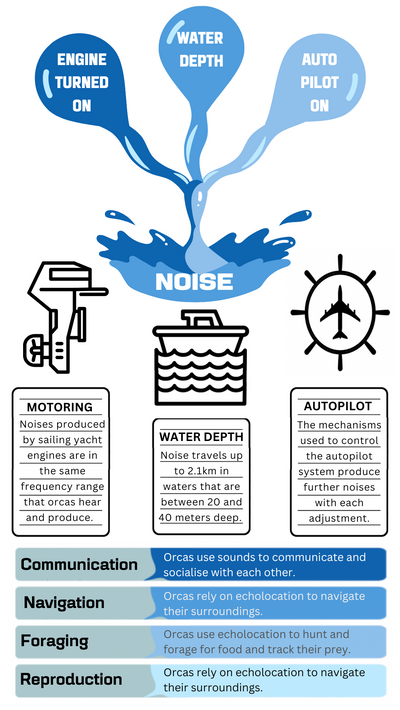Orca interactions with sailing yachts
‘ORCA ATTACKS’
Over the past 4 years, these words have been plastered across the global media. Yet an orca, the ocean's apex predator, has never killed or knowingly harmed a human in the wild.
Since June 2020, there have been increasing reports of orcas approaching and interacting with sailing yachts in the waters around the Strait of Gibraltar and the Portuguese and Spanish coasts, with encounters ranging from mere nudges all the way to the sinking of five yachts.
This sudden shift in behaviour (from zero to over 239 reported encounters in the first year and a half) has left scientists and sailors alike perplexed and concerned. As both an ocean science student and a sailor, I decided to try to explore the reasons behind this bizarre phenomenon and what may be linking them all together.
Exposing the factors at play
I began by analysing 481 recorded voyages of boats that sailed these waters since this phenomenon started.[1] Of these, 153 reported interactions with orcas, while 328 voyages passed without incident.
The results were fascinating. Analysis revealed that the most significant factors influencing the likelihood of orca encounters was the type of boat. Astonishingly, 98.1 per cent of interactions involved sailing yachts. Further logistic regression analysis highlighted three critical factors: water depth (20–40 meters), the use of motors, and whether the autopilot was being used (Fig. 1).
The most intriguing thing about these results is that both the motors and the autopilot function produce noise at a similar frequency to the frequencies heard and made by the orcas. And it turns out that small motor noise travels furthest at the critical depths: upwards of 2 kilometres.

Figure 1. The factors influencing orca encounters
Why does this matter?
These results give us a starting point for sailors to decrease the likelihood of encountering the orcas.
But understanding the causes behind these orca attacks is crucial, and not just for the safety of people on board the vessels involved. This group of orcas was already considered critically endangered prior to this behavioural development and their ‘aggressive’ behaviour has already triggered retaliatory actions from humans. For instance, some individuals have resorted to shooting flare guns at the orcas, a response that endangers an apex predator, with potentially catastrophic consequences for the wider ecosystem and that ultimately puts people at further risk. So, what can be done?

A lighthearted take on the topic. © Toren Moore @torensartone
Navigating towards harmony
Future research should focus on pinpointing the initial triggers of this behaviour. Did the orcas randomly develop this behavioural change or is there an underlying cause? Are they responding to a stimulus?
Most importantly, how do we stop this situation from worsening? What are the best ways to avoid an encounter, and if it does happen, how should sailors react?
One thing is for sure: aggressive retaliatory actions are not the right response. It is our duty to figure out what is causing the orcas to behave in this way and adapt our behaviour accordingly, to ensure that this magnificent species is protected.
• Leila Moore (leilamarsci@gmail.com)
[1] Data from voyages that were reported to the Cruising Association at the time of the research.
